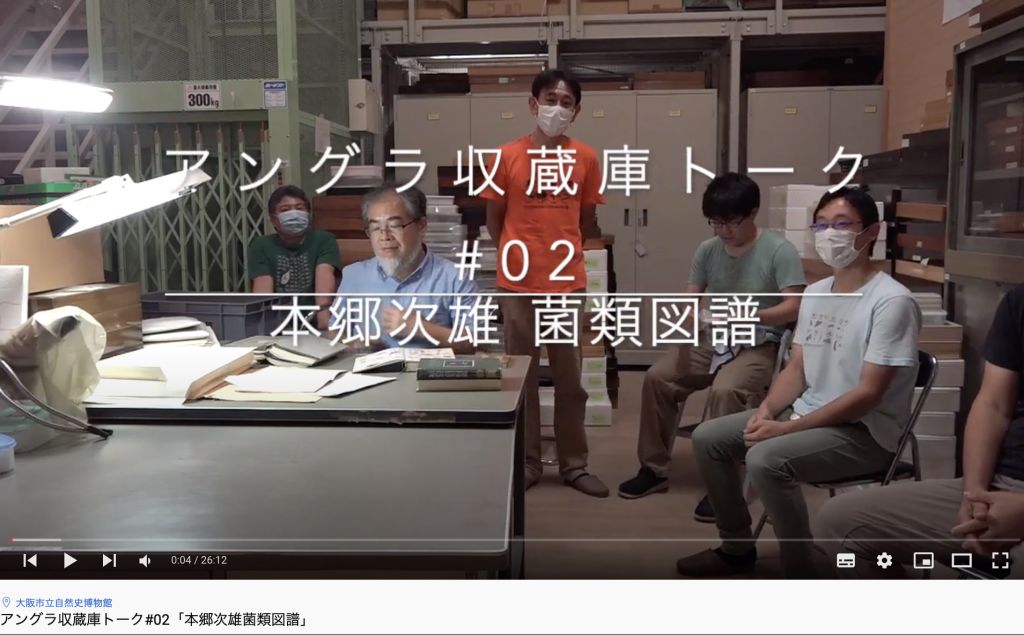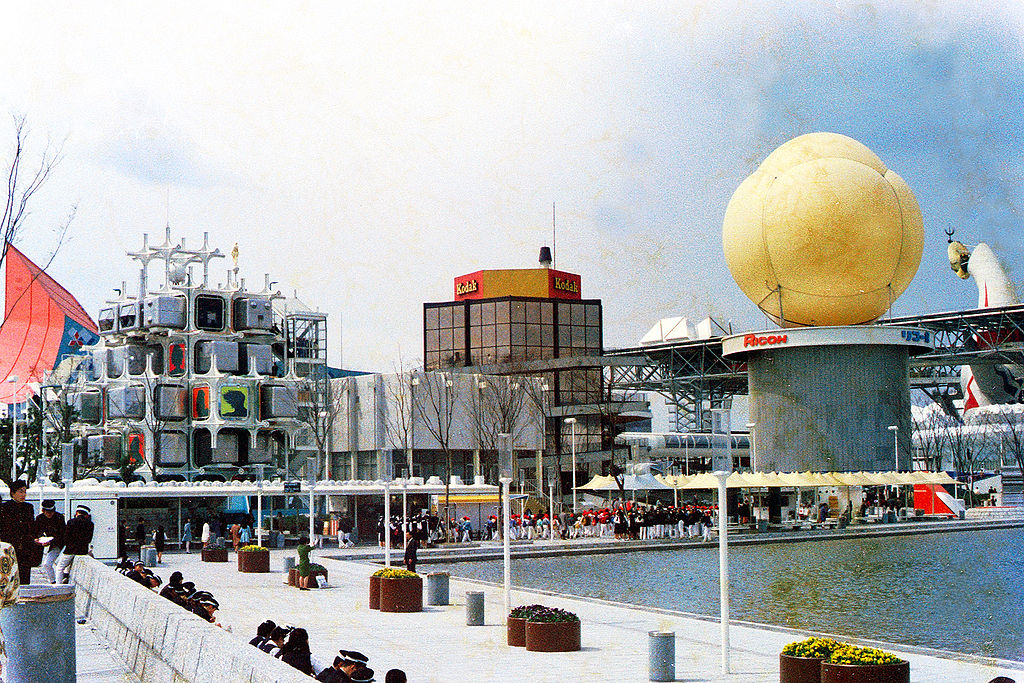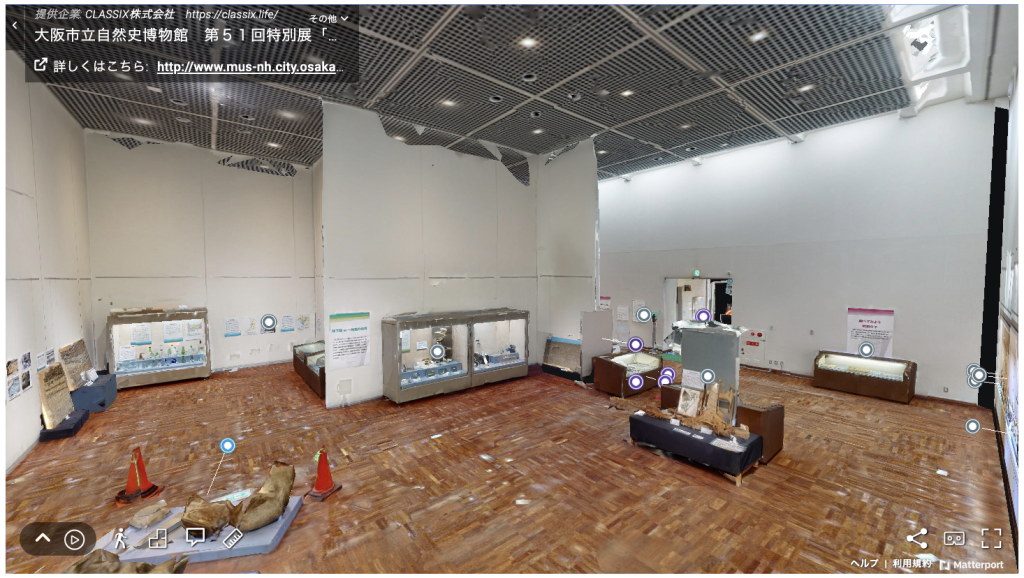
December 14, 2021
New Technology and Museum Exhibits: In the Age of Coronavirus and SDGs
[2021.12.14]
Daisuke SAKUMA
Head of Curatorial Department
Osaka Museum of Natural History
Expositions and Museums
In 2025, Osaka will host a World Exposition with the themes “Designing Future Society for Our Lives,” very close to life sciences and SDGs. 1970’s Osaka Expo, held in Suita City, suburb of Osaka, was themed “Progress and Harmony for Mankind” and displayed many futuristic technologies, including the moon rock brought back by Apollo 12. However, “The Tower of the Sun” seemed to be an exception to the rule, as its theme was an introspective look at the history of humanity and Earth. The only memory from my personal participation in the event was a stray child center.
“World expositions” and many other domestic expositions in Japan have been linked to industrial development since the Meiji era, and the 1970’s Osaka Expo and Expo ’85 (International Exposition, Tsukuba Japan 1985) were no exceptions. Expo ’75 (Okinawa International Ocean Exposition of ’75) and the Expo ’90 (The International Garden and Greenery Exposition) continued to gather large crowds and promote tourism while taking into accounts slightly more environmental issues, basically staying in the concept of the optimistic future of industrialization.

takato marui – originally posted to Flickr as Kodak+Ricoh Pavilion, CC
BY-SA 2.0,
https://commons.wikimedia.org/w/index.php?curid=10114580
In a sense, Japanese museums have been interconnected with expositions since their birth. The history of establishing museums in various locations has been interconnected with a corresponding variety of expositions. Cultural zones such as Ueno in Tokyo, Tennoji in Osaka, and Okazaki in Kyoto are related to the National Industrial Exposition. Some of the buildings have been reused as is, such as the Japan Folk Crafts Museum, Osaka, and the former National Museum of Art, reused after exposition of 1970. The legacy of various exposition, large and small, has shaped many museums. Even the early activities of Osaka Museum of Natural History, have a deep relation to the 1952 Women and Children Exposition held at Tennoji Park. The museum’s ongoing struggle to break free from the shadows of expositions is ever-present as they try to exert their independence. Expositions, which attract a wide range of people for an impactful and extraordinary experience for a limited period, and museums, which aim to nurture people repeatedly and continuously through daily activities as a part of society, have different approaches. A permanent exhibition of a museum should let visitors make discoveries through repeated viewing and learning. For that to happen, we need to keep offering new angles to observe the same exhibits, not just repeatedly renew the visual display. Gallery talks and workshops are prime examples of ways to promote new insights into daily life.
Large-scale Special Exhibitions as a Sensational Experience
On the other hand, museums have held large-scale traveling exhibitions to offer a sensational experience. Creating transient events that exhibit rarities (including those from overseas) is not so different from expositions. There is certainly a standard of cultural significance to hold events showcasing works from overseas that would otherwise not be shown. International cultural exchange is the integral duty of museums. In reality, however, these events have come to be held repeatedly for entertainment purposes, focusing on the “number of visitors” in a result-oriented approach. The feeling of exclusivity is gone due to these sensational events being held season after season, and there is a tendency to use bizarre exhibits and newer, more eccentric techniques to attract visitors. The same applies to renewing permanent exhibits, and museums tend to morph into exposition-like fairs demonstrating the latest technologies. This tendency is noticeable especially in nature and science-related museums. Are museums headed in the right direction?
Balance of Power Between Content and Technology
As Folk & Dierking (2012) 1 alluded, the development of Information and Communication Technology has made transmitting the phenomena that had been previously difficult to do, possible. Simulations, computer graphics, and interactive displays with video and audio archives have certainly enhanced the visitors’ understandings. Smartphones have also become an important asset for low-vision visitors. Also, maintenance has become easier as DVDs evolved into memory cards and hard disks into SSDs. Apt technology is certainly advantageous to museums. Meanwhile, the widespread use of touch panels since the iPad and Windows 10 has led to technology-acclimated children touching LCDs in the exhibition room and wondering why it won’t operate. The user-friendly interface has changed drastically in the past decade. Will the “text panel,” a message display device soon become a thing of the past?
But what about the contents that rely on technology? As this has always been the case, cutting-edge technological capabilities become out-of-date at an incredible speed. What will happen to high-resolution video equipment, new sound technologies, and virtual reality? Does an exhibition need the stunning 8K images? If an exhibit has a meaningful message, out-of-date video technology can perform just as well, as black-and-white photographs, talkies, and old masterpieces can be appreciated even today. Highly regarded exhibits are timeless.
Of course, it is necessary to keep experimenting with all of the possible expressive methods for exhibiting, and as a curator, I need to keep searching for the best way to express the themes of our exhibitions. At the same time, it is also important to have an interface that seamlessly blends in, and any visitor can operate without feeling distressed. Engineers refer to well-understood technology that has undergone a series of improvements and changes as mature technology, sometimes expressed as “withered technology.” Since it is not cutting-edge technology, it is not subject to substantial updates or major changes in operation. Clicking with a mouse or touching an icon on the screen will be natural for everyone. But when it comes to VR goggles, not everyone can use them without explanation.
In our museum, our fundamental view on updating the permanent collection is to build upon such “mature technology.” Compared to the speed at which “cutting edge” technologies become out-of-date, technologies that have survived a certain period are certainly slower. Also, development costs are usually lower because tools for content creation and engineers in that margin are affluent.
How to Archive Contents and Exhibitions
Many historical museums will have a mixture of modern and old exhibition rooms. But after a few years will have passed, it may not always be the exhibition rooms with the latest technology that will still be popular. There is a need to look ahead into the future of permanent exhibitions when it has aged. It is not the same as an exposition that ends as it ages. A museum must be visited repeatedly, and the same exhibit that someone saw as a child may have a different meaning when they see it as an adult. But even so, the exhibits will need to be renewed for various reasons, such as for the progress of research or the deterioration of the exhibited items. When this happens, how can we archive the contents that were previously on display? With the development of VR, the archiving of exhibition spaces is rapidly becoming a newfound reality.

Museums are enthusiastic about biological and ethnographic archiving but have been inadequate in their self-archiving efforts. But there is room for many pursuits. I am sure that between 2020 and 2021, many museums that were forced to close due to COVID-19 and were unable to hold in-person events have rebuilt their exhibition rooms in VR or created online programs of lectures and symposiums. It may have been out of unexpected necessity to create such things, but if it led to the progress of digital archiving of museum activities, other sacrifices made during these past two years did not go to waste. In museums, many things are easy to archive, such as videos of exhibitions and lecture records, and others that are difficult, such as records of special exhibitions and observation sessions, nevertheless all of the above should be recorded for future use.

As a service to current and future users, museum’s past and current contents could be quite interesting. They do not necessarily have to be created by the latest technology. For example, looking at YouTube today, if you search for “whale,” you will find both low-resolution videos from decades ago and the most advanced high-resolution videos side by side. The most technologically advanced videos do not equate to the needs of the viewers. As for music, my playlist is a mixture of 1960s bebop, 70’s art rock, and music from the ‘80s to 2020s. It ranges from monaural to high-resolution audio.
Older contents made with mature technology may not be cutting-edge, but the expressive quality is powerful in its own way. It is desirable to exhibit exuberant contents using withered technology. “Digital Transformation” is the mandatory choice, but those should be sustainable and substantial attempts rather than vanity exhibitions.


The Museum’s Response to SDGs
The theme of Expo 2025, Osaka is “Designing Future Society for Our Lives,” where SDGs is the main keyword. Individual elements of SDGs are not particularly novel concepts, but rather issues that have been raised (but cannot be solved.) It holds meaning when these issues are pursued across disciplinary boundaries. As ICOM pointed out, museums could play an active role as a place for interdisciplinary synthesis and discussions. If we could use the exposition to think across disciplines about how the future society should be and deepen the concept of a museum – will be a culminating feat. Museum of Natural History would be an appropriate place for such discussions. What has the museum valued and appealed for in its activities to date? The chance to delve deeper on the topic of SDGs will arise only when we reexamine and disseminate answers to that question and strengthen the relations with society and differing fields.
The term “appropriate technology” harks back to the conception of development education. The idea was for communities to become independent by aptly using mature technology. With SDGs, above advanced technology, there is urgency in incorporating existing mature technology to design a society using our knowledge and ingenuity. Museums, too, should not inveigle themselves into using the newest technology, but also refine their existing contents with a reexamining eye and present them with new values and perspectives. If this can be done, expositions and museums can form a more meaningful affiliation.
Visit Osaka Museum of Natural History Website